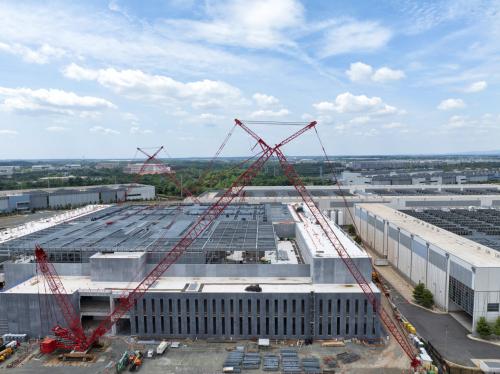On Sunday, Chinese premier Li Keqiang heads out from Beijing for his first visit abroad in that role. His first stop: India. He’s probably wishing the trip had taken place about a month and a half ago. At that time, there was a sense in India that the new leadership in China was reaching out to India for a number of reasons. Over the last month, however, temperatures rose in the Himalayas, as the long festering China-India boundary dispute flared once again. The good news for those interested in stable Sino-Indian relations: the two governments seem to have got past the recent incident. They continued to communicate throughout the crisis. Pre-scheduled China-India talks on Afghanistan were held in the midst of the crisis—their first such dialogue focused on the subject. Chinese and Indian military officers held a border meeting. The Indian foreign minister traveled to Beijing. And Li’s visit is going ahead. The bad news: The border incident reinforced the mistrust that many in India feel toward China and its intentions. Furthermore, it was a reminder that despite increased engagement, bilateral differences have the potential to stall, if not, reverse progress toward more stable relations. Li’s challenge: to get the relationship back on a positive trajectory and begin to convince a skeptical Indian public that the border incident was not representative of the new Chinese leadership’s approach toward India. Overall, the premier has his work cut out for him.
Before mid-April, many observers of Sino-Indian relations noted that under the new Chinese leadership there seemed to be an “upswing in relations.” Chinese president Xi Jinping proposed a five-point formula to improve ties with India. The two countries agreed to discuss Afghanistan. “Positive vibes” were detected at Xi’s subsequent meeting with Indian prime minister Manmohan Singh on the sidelines of the BRICS summit in Durban. The Chinese government indicated that Li soon planned to travel to India.
This trend did not surprise observers. After all, there were enough reasons for Beijing to seek a stable relationship with India: economic ties, cooperation in the multilateral realm and a desire to limit India’s burgeoning relationships with the U.S. and Japan (reports indicated that Chinese officials were eager for the premier to visit India before the Indian prime minister headed to Tokyo in late May), as well as other countries in the region. There were also reasons for the political leadership not to want the relationship with India to deteriorate: such as preoccupation with China’s eastern maritime disputes and the North Korean situation, as well as the need for stability in the region with the impending American withdrawal from Afghanistan.
What did surprise observers was the border incident. Former U.S. deputy secretary of state James Steinberg, who was in India as the crisis played out, said “I don’t know what the Chinese leadership is up to…confronting India and Japan, especially when they have been trying to build strong bilateral relations…The Chinese leadership should understand, it will not benefit them in the long run.” The opacity of Chinese decision-making meant that various theories were floated about why Chinese troops had taken the unusual step of setting up camp across the Line of Actual Control (LAC): differing perceptions of the LAC; “a rush of testosterone by local officers;” in response to India building up its border infrastructure; the desire of the People’s Liberation Army to assert authority; the result of an internal political power struggle; Chinese expansionism; or Chinese strategic designs against India. One observer contended that a clear motive was near impossible to pinpoint: that “Chinese foreign policy is an enigma wrapped in a mystery.”
Since the resolution of the crisis, Beijing has tried to press a “reset” button, trying to return the relationship to its pre-crisis trajectory. The Chinese ambassador to India unusually took to the editorial pages of an Indian newspaper to emphasize, “To strengthen good-neighbourly and friendly cooperation with India is China’s strategic choice and established policy which will not change.” Chinese officials indicated that greater efforts should be made toward a boundary settlement.
The Chinese government also signaled that the choice of India as the premier’s first stop was very deliberate and a sign of the importance Beijing placed in the Sino-Indian relationship. Hosting an Indian youth delegation, Li put a personal spin on the choice, noting the “the seeds of friendship sown” when he visited India 27 years ago—a trip that he said left a “lasting impact.” Beyond trying to win hearts and minds, he also seemed to want to appeal to Indians’ pocketbooks, talking about the economic benefits of greater ties. Finally, he pointedly mentioned experiencing the “warmth and hospitality of Indian people.”
That hospitality will certainly be forthcoming on the part of key policymakers in the Indian government. Delhi has its own reasons for seeking stable relations with Beijing. Thus, Indian officials had joined their Chinese counterparts in playing down the border incident and seeking to resolve it speedily. Since it’s been resolved, both sides have sought to highlight their success in defusing the crisis, pointing to that as a sign of progress in the relationship. During that visit, they will work toward agreement on certain issues. Expectations are that there will be developments on the economic front. China-India watchers will also be looking for any sign of progress on the border and Brahmaputra river issues.
Among the Indian public, the welcome for Li is likely to be cooler. The recent tensions at the border—heavily covered in the Indian media—reinforced negative impressions of China among many in the Indian public. Many—even beyond the public—will take with a larger grain of salt the new Chinese leadership’s assurance that it intends for China to rise peacefully, be a responsible state, and seek good relations with India. The crisis has reinforced the narrative that has prevailed in many quarters since the 1962 China-India war: that China only understands strength; that while Beijing’s leaders say China and India “must shake hands,” they cannot be trusted—that one hand held out might just be a precursor to the other stabbing one in the back.
The border incident has also kept the focus on bilateral differences and even beyond the border issues there are many of those: China’s growing political and economic ties with India’s neighbors, its Indian Ocean ambitions, the overall lack of trust, cyber-security concerns, Tibet, the diversion of the waters of the Brahmaputra, a trade imbalance and restricted market access in China for Indian companies, the sense that China does not respect India and/or that it will seek to prevent India’s rise and, significantly, China’s relationship with Pakistan, which, of course, is Li’s second stop.
The incident also seemed to strengthen the hands of those inside and outside government who are skeptical of China’s intentions towards India and weakened the voices of those urging engagement with that country. Furthermore, the crisis negatively affected the credibility of the Indian government on issues related to security broadly and China in particular. This matters because significant bilateral progress on crucial fronts will require concessions from both sides—concessions that might now be harder for the Indian government to sell on its side.
Overall, that’s a lot of mistrust and skepticism to turn around in one visit. But if Li Keqiang wants to see the relationship prosper, the trip is a good time to start trying on two fronts. First, substance: progress on key issues will go a long way in building trust. Second, style: Li should take the opportunity to introduce himself and reintroduce the new Chinese leadership not just to Indian government officials and private sector leaders, but also to the Indian public—for it might be tempting to dismiss public sentiments, but they will play a key role in setting the limits of the relationship.
The Brookings Institution is committed to quality, independence, and impact.
We are supported by a diverse array of funders. In line with our values and policies, each Brookings publication represents the sole views of its author(s).



Commentary
Premier Li Keqiang of China Goes to India
May 18, 2013